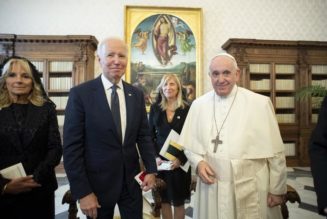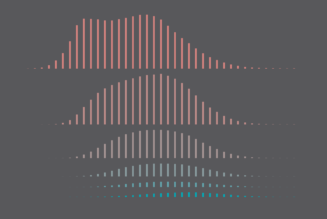ROME – One of the great Vatican success stories of the past half-century has been its exponential growth in diplomatic relations. When Pope John Paul II took office in 1978, the Holy See had full relations with 84 nations; with the latest addition of Oman in February, that total now stands at 184, meaning the Vatican has added a robust 100 countries in just 45 years.
To a large extent, that growth is a testament to the perceived geopolitical relevance of John Paul II. The number of nations that recognized the Holy See had reached 174 by the time John Paul died in 2005, meaning only ten nations have been added in the last 18 years.
In fairness, however, that’s largely because the Vatican is running out of targets. The United Nations recognizes only 195 countries in the world, including 193 member states and two non-member observers (the Vatican and Palestine).
That means there are only eleven states left with which the Vatican does not have full diplomatic relations. In seven of those countries, there is no Vatican representative at all:
- Afghanistan
- Bhutan
- China
- Maldives
- North Korea
- Saudi Arabia
- Tuvalu
Meanwhile in four other states, there are apostolic delegates, meaning papal envoys to the local Catholic community but not, at least formally, to the government:
- Brunei
- Comoros
- Laos
- Somalia
Of those eleven holdouts, the big targets for the Vatican clearly are China and Saudi Arabia. The Saudis are key to the Middle East and to relations with the entire Islamic world, while China is a global economic and political superpower increasingly central to pretty much everything.
All of which, by way of background, brings us to the major diplomatic story of the past week – the expansion of the “BRICS” bloc of nations, referring to Brazil, Russia, India, China and South Africa, to include six new entries: Argentina, Egypt, Ethiopia, Iran, Saudi Arabia and the United Arab Emirates.
Together, the new 11-member alliance represents 36 percent of the world’s Gross Domestic Product and 47 percent, or almost half, of the global population, making it a potentially mammoth alliance – if, that is, the member states actually manage to function as allies.
Officially, the Vatican has taken no position on the expansion of the BRICS coalition, although it was given fairly extensive attention in official Vatican media outlets. Unofficially, however, there’s every reason to believe that not only is Pope Francis likely to smile on it, but to see it as an important part of the geopolitical endgame of his papacy.
In the future, August 2023 may come to be see as a turning point in paving the way for Vatican relations with both China and Saudi Arabia, and, more broadly, in the Vatican’s transition away from being perceived as a pillar of Western civilization to being a genuinely global and non-aligned institution, as equidistant from Washington and Brussels as from Moscow and Beijing.
By all accounts, China under Xi Jinping was the driving force behind the BRICS expansion, as a key expression of its overall strategic aim of countering Western control of the global economy and major world institutions. China’s aspiration is to build a more multilateral world order, one not exclusively denominated in dollars and not dominated by the United States.
As it happens, that vision dovetails fairly neatly with Pope Francis’s agenda for global affairs. In a recent interview, the pope described himself as a “stone in the shoe” to many for his criticism of empires – and, since he was speaking in the context of Latin America, it was fairly clear which “empire” in particular he had in mind.
Increasingly, China may come to see the Vatican under Francis as an ally in the effort to build an alternative to the Western world order. Naturally, the pope’s willingness to sign and stand by a controversial agreement with China over the appointment of bishops in the country, despite difficulties in its application, augments the impression of common cause, as does the rough alignment between Rome and Beijing on the conflict in Ukraine.
Moreover, a BRICS coalition containing not just Brazil but also Argentina may be in a stronger position to make the case to Xi that the Catholic Church, and specifically the Vatican, can be an asset at least as much as an irritant. Lula, a close friend and political ally of Francis, may be in a particularly strong position to help press that argument.
As far as Saudi Arabia is concerned, it’s already rethinking its traditional diplomatic nostrums. The kingdom recently relaunched diplomatic relations with Iran, following a deal brokered by China, and is reportedly at least theoretically pondering a new opening to Israel.
After the Vatican’s agreement with Oman, Saudi Arabia remains the only country on the Arabian Peninsula with which the Holy See doesn’t have relations. The fact that another new BRICS member is the UAE, a country with an especially close relationship with Francis and the Vatican after the signing of the 2019 Document on Human Fraternity in Abu Dhabi, may position the UAE to help nudge the Saudis towards détente with Rome.
Saudi interest in an arrangement with the Vatican may also be enhanced by the expanding Christian footprint in the country, currently estimated at 2.1 million people out of a total population of 36 million. Most are foreign workers from countries such as the Philippines, Lebanon, Sri Lanka and India. The Saudis, who crave stability, may see a deal with the Vatican as a way to regularize their status.
Granted, it’s difficult to say how effective a force in global affairs the new-look BRICS alliance may be. China and Russia long have had a strained relationship, India and China are clear rivals in Asia, and Saudi Arabia and Iran, despite their recent reset, remain at odds on a variety of matters, including relations with the U.S.
Certianly the project of a unified BRICS currency as an alternative to the American dollar doesn’t seem to be getting off the ground anytime soon. Ironically, Argentina enters the alliance at a moment when its leading presidential contender, Javier Milei, actually is is proposing to move in the other direction, scrapping the Argentine peso and replacing it with the dollar.
Nevertheless, from the Vatican’s point of view in the Pope Francis era, the BRICS growth is hopeful not only as a harbinger of a more multilateral world, but also one in which the final holdouts on diplomatic relations with the Holy See may finally be induced to come on board — because, under Francis, a gain for the Vatican is no longer necessarily seen as a gain for the West, and certainly not for the U.S.







